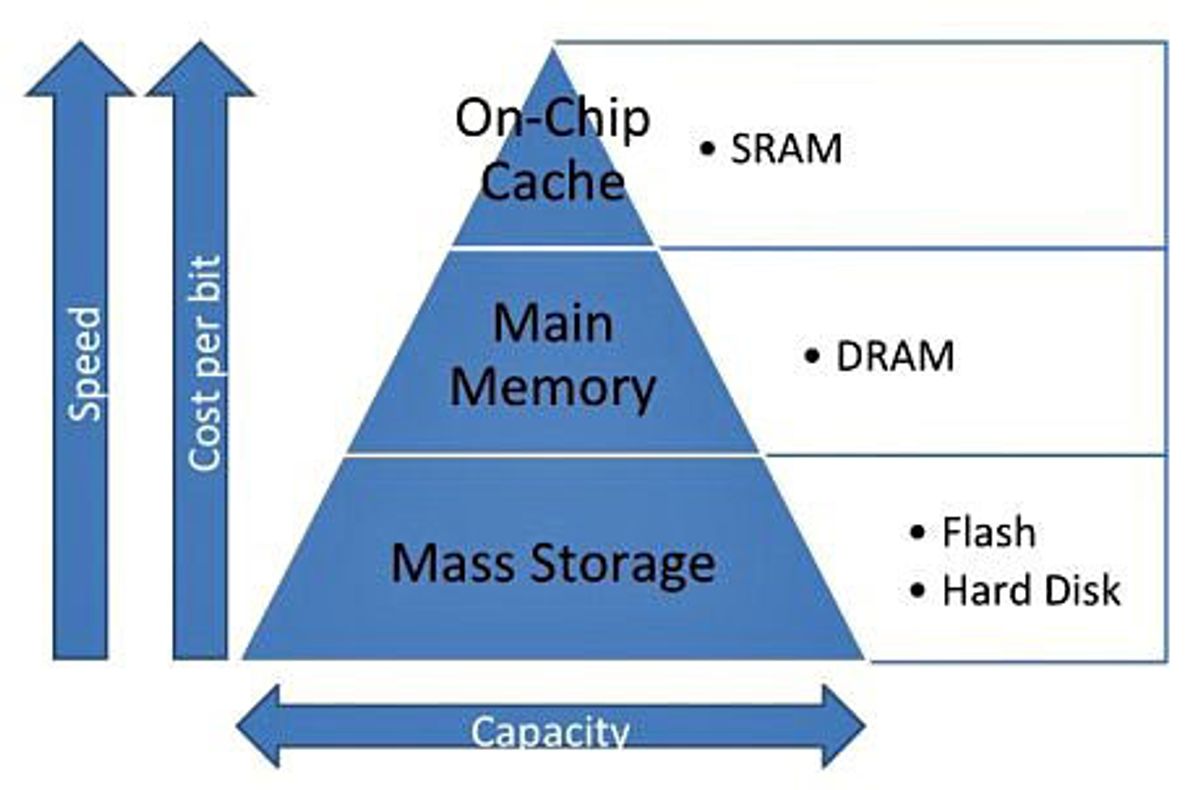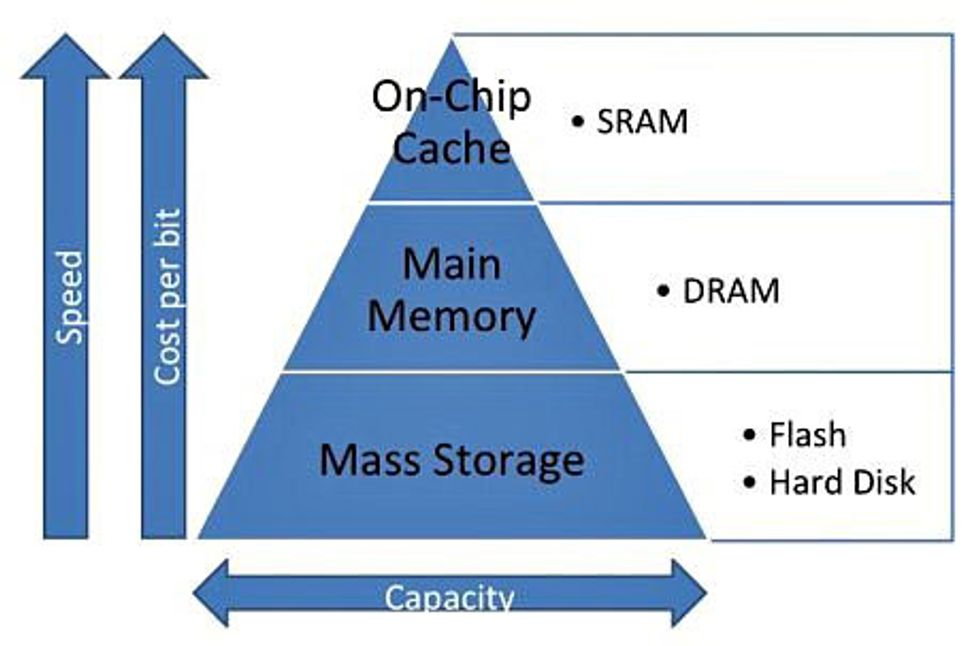17 May 2012—Our smartphones and ultrathin laptops rely on a triumvirate of memory technologies—SRAM, DRAM, and flash—each customized for a specific purpose. They’ve all been fabulous workhorses, but now these memories are struggling to keep up with the steady demand for chips that are faster, cheaper, more reliable, and more energy efficient.
Industry watchers expect the most-advanced memory makers to hit a wall around 2015. So the question is, What comes next? Will we always be saddled with a complex hierarchy of different kinds of memory? Or is it possible we just might find the memory industry’s version of a cure-all—a single, universal memory format that can provide high-density storage, low-power operation, and unparalleled speed?
I’d like to say we have a clear candidate. Sadly, the laws of physics seem to rule against it. None of the 10 or so potential replacement technologies that are currently on the table meet every requirement. Despite plenty of hopeful talk in the research community about universal memories, it’s likely the memory hierarchy is only going to get more complicated.
Here’s where things stand now: Today’s memory technologies can’t do everything well, so they occupy specific niches. Static RAM (SRAM) is the speed demon, working in gigahertz lockstep with the microprocessor. We use it to cache a processor’s most frequently accessed instructions and data. But SRAM is expensive—each memory cell needs six or eight transistors. So if you wanted to make high-capacity SRAM, you’d need to sacrifice a lot of real estate on a silicon wafer just to make one chip.
As a result, dynamic RAM (DRAM) is the technology of choice when it comes to main computer memory. It’s moderately fast and quite compact. Each cell consists of just one transistor and one capacitor. But DRAM has a big limitation: Its capacitors are leaky. If you don’t take time to refill them every hundred milliseconds or so, the data simply evaporates.
So we have flash, which needs just one two-gated transistor for every memory cell. Flash’s low cost per bit and nonvolatility (unlike SRAM and DRAM, it holds onto data even when it’s powered down) has made it the technology of choice for mass storage in virtually all mobile devices. But flash has shortcomings of its own. Its data must be written and read in large blocks, making it several orders of magnitude slower than DRAM.
For a while, at least, each of these memories performed well for its specific purpose. But lately, they have all begun to suffer. The shrinking of chip features today doesn’t produce the same gains that it did a decade ago. As they shrink, SRAM and DRAM cells now need proportionally more power to operate, and flash is getting progressively leakier. In a few years, these memories will boast even smaller feature sizes, but they won’t perform much better than the previous generation.
Ideally, we’d like to replace SRAM, DRAM, and flash wholesale with a perfect “universal memory”—a single technology that can be ultrafast, very long lasting, low power, nonvolatile, scalable, and very, very cheap. That has certainly been the talk of the industry for a number of years. Next week, my company—Applied Materials—is sponsoring a panel at the 2012 IEEE International Memory Workshop in Milan, which we hope will take stock of some of the leading candidates. Chances are we won’t be able to identify one that does it all.
Of all the new memories being considered, magnetoresistive RAM (MRAM) seems to be closest to universal. MRAM replaces the capacitor of a DRAM cell with a pair of magnets, one with fixed polarity and one that can be “flipped.” The cell is programmed by flipping the movable magnet and read by sensing the resultant change in resistance. MRAM has much lower power consumption than DRAM, truly unlimited endurance, and should retain data for 20 years, twice as long as flash can. But even so, MRAM is only as speedy as the lowest-end SRAM and has less than a tenth of the cell density of flash. And it’s not really proven whether we’ll be able to come up with a cheap, speedy, and reliable way to put those tiny magnetic patches into circuits in the fab.
There are other candidates out there. One technology that often gets headlines is resistive RAM (which goes by either RRAM or ReRAM). RRAM works by forming or breaking minuscule conductive pathways through normally insulating materials. But RRAM currently has lower endurance than MRAM (the cell material gets fatigued over time) and has been held back by material and manufacturing difficulties.
Then there is phase-change RAM, or PCRAM, the most mature of the new emerging memory technologies. PCRAM cells work by switching a fragment of chalcogenide glass between amorphous and crystalline states, which have different resistivities. PCRAM underperforms DRAM in speed and flash in density, making it difficult to find compelling applications for it. But the memory will likely find some niches, such as aerospace applications, where its excellent resistance to radiation allows it to keep working when other memories would fail.
So far, each of the emerging memories is missing at least one key attribute that would make it a universal memory. And chances are that even if we do find one memory to rule them all, it will likely be manufactured in different ways so that it’s optimized for particular applications. Eking out the best speed, for example, would likely require compromising on storage capacity and vice versa. To make matters worse, even as new memory technologies emerge on the scene, memory makers will likely still be spitting out SRAM, DRAM, and flash chips for less advanced applications for years to come. In other words, brace yourself for an even more confusing landscape. Memory is about to get really messy.
About the Author
Gill Lee is a principal member of the technical staff at Applied Materials. He is based in Santa Clara, Calif.

